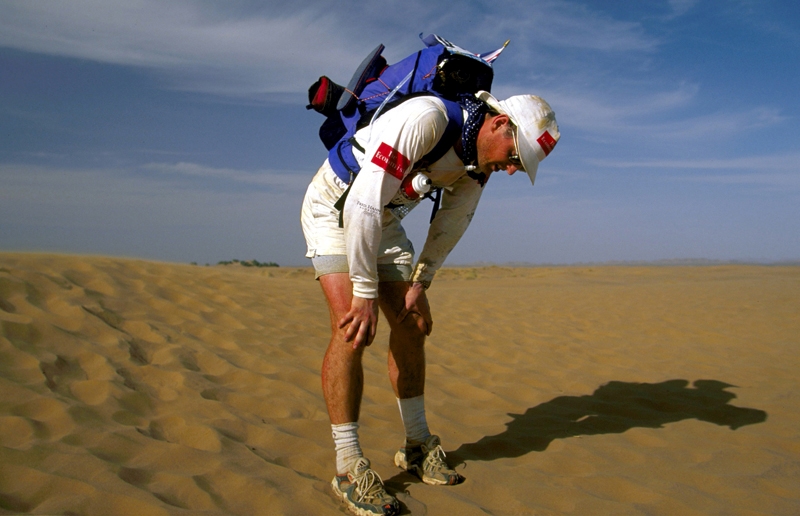You are viewing 1 of your 1 free articles. For unlimited access take a risk-free trial
Exercise addiction

Confirmation that exercise can be as addictive as ‘recreational’ drugs like cocaine, alcohol and nicotine came last month in a widely-reported US study which found that laboratory mice deprived of their daily ‘fix’ on the exercise wheel displayed measurable withdrawal symptoms in particular regions of their brains.
But what exactly is exercise addiction? How common is it? Is it defined by volume or by attitudes? And how does it relate to eating disorders?
These are some of the questions a team of researchers from Cambridge set out to answer with a study of 56 adult female exercisers, interviewed about their exercsie behaviour and attitudes with the primary aim of formulating diagnostic criteria for exercise dependence.
The participants, mostly white and in their twenties and thirties, were recruited from a variety of sources, including aerobics classes, sports centres, athletic clubs and magazines and the Eating Disorders Association.
An intensive 1-3-hour taped interview schedule comprised the eating disorders examination and the exercise dependence interview, preceded by the exercise-dependence questionnaire.
Two key diagnostic criteria for exercise dependence emerged from analysis of the resultant data:
Impaired functioning in at least two of the four following areas – psychological, social and occupational, physical, and behavioural. For example, Annie continued to exercise obsessionally despite ‘permanent knee and shin injuries’, and had given up on her social life in order to be able to start her régime at 5am; Millie experienced ‘intrusive thoughts’ about exercising; and Jessica reported that exercise took priority over everything, even her son;
Withdrawal, evident either as an adverse reaction to the interruption of exercise or unsuccessful attempts at exercise control. For example, Peta, on missing her regular swim session, felt ‘like a big fat blob…so agitated and so out of control’; Millie, on a visit to see her sister’s newborn baby could only think ‘I have got to get out and go for a walk’; and Peta (again) talked of a ‘terrible, terrible conflict’ between her urge to exercise and her deep desire to rest.
When participants’ responses were judged against this criteria, 10 (18% of the total) met the criteria for exercise dependence in full, while a further four who met the criteria in part were said to suffer from ‘disordered exercising’.
Interestingly, nearly half the women in the study were diagnosed as having either a clinical eating disorder (18) or showing signs of problematic or ‘disordered’ eating (9). Of the 10 women diagnosed as exercise dependent, all also showed evidence of an eating disorder. Of the eight participants diagnosed with an eating disorder but no exercise dependence, one showed evidence of disordered exercising, as did three of the nine participants with disordered eating.
The only previous attempt to develop diagnostic criteria for exercise dependence distinguished between ‘primary’ dependence, independent of any other clinical disorder, and ‘secondary’ dependence, which could be associated with an eating disorder. All 10 women diagnosed with exercise dependence in the current study would have fulfilled the criteria for secondary rather than primary dependence.
‘This is in line,’ say the researchers, ‘with the results of a recent study which concluded that, if primary exercise dependence exists in women, it is a rare phenomenon.’
So is the exercise dependence a secondary feature of an eating disorder or a true ‘co-morbidity’ – ie two disorders existing side by side with no suggestion that one causes the other? According to the researchers, it is impossible to say, and they recommend use of the term ‘associated exercise dependence’ to describe women with both disorders.
‘It remains to be established,’ they point out, ‘why certain eating disorder sufferers show the symptoms of exercise dependence whereas others do not.’
It also remains to be established whether the same diagnostic criteria are valid for men and whether primary exercise dependence is more common among men, who are less prone by far to eating disorders.
In the meantime, early identification of women with ‘disordered exercising’ may help to prevent the development of full-blown exercise dependence.
Br J Sports Med 2003; 37:393-400
Newsletter Sign Up
Testimonials
Dr. Alexandra Fandetti-Robin, Back & Body Chiropractic
Elspeth Cowell MSCh DpodM SRCh HCPC reg
William Hunter, Nuffield Health
Newsletter Sign Up
Coaches Testimonials
Dr. Alexandra Fandetti-Robin, Back & Body Chiropractic
Elspeth Cowell MSCh DpodM SRCh HCPC reg
William Hunter, Nuffield Health
Keep up with latest sports science research and apply it to maximize performance
Today you have the chance to join a group of athletes, and sports coaches/trainers who all have something special in common...
They use the latest research to improve performance for themselves and their clients - both athletes and sports teams - with help from global specialists in the fields of sports science, sports medicine and sports psychology.
They do this by reading Sports Performance Bulletin, an easy-to-digest but serious-minded journal dedicated to high performance sports. SPB offers a wealth of information and insight into the latest research, in an easily-accessible and understood format, along with a wealth of practical recommendations.
*includes 3 coaching manuals
Get Inspired
All the latest techniques and approaches
Sports Performance Bulletin helps dedicated endurance athletes improve their performance. Sense-checking the latest sports science research, and sourcing evidence and case studies to support findings, Sports Performance Bulletin turns proven insights into easily digestible practical advice. Supporting athletes, coaches and professionals who wish to ensure their guidance and programmes are kept right up to date and based on credible science.









